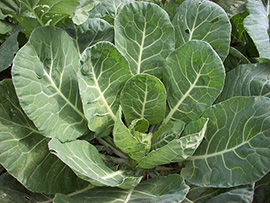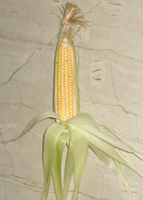Saturday, November 17, 2012
Unhealthy Gums Can Be Signs of Diabetes
Diabetes is known as a silent disease is one disease that suddenly strikes without symptoms and signs specific. High blood sugar levels it can also be observed from one's gum health, which may be an indicator of diabetes.
Gum disease including health complications that can be experienced by people with diabetes. In fact, people with diabetes are 3 to 4 times more likely to develop periodontal disease or bacterial infection of the gums to the ligaments and bone that support the teeth.
Periodontal disease can increase the risk of loss of bone supporting the teeth. This happens because most people with diabetes are more susceptible to bacterial infection and the immune system is low, so that the body can not fight the bacteria that cause gum disease.
In turn, serious gum disease can affect blood glucose control and contribute to the development of diabetes. So there is a reciprocal relationship between gum disease to diabetes.
Label:
Medicine and Disease
Carrots nutrition facts
Naturally sweet, delicious and crunchy, carrots are healthy additions you can make to the vegetable list in your diet. Indeed, these root vegetables come with wholesome health benefiting compounds such as beta-carotenes, vitamin A, minerals and anti-oxidants in ample amounts.
Botanically these taproots belong to the Apiaceae or umbelliferous family of the genus; Daucus and known scientifically as Daucus carota. The other close Apiaceae members include parsnips, parsley, dill, cumin, etc.
Carrot plant is cultivated across the world for its prized taproot. The plant is biennial and bears flowers during second year of life. However, in general, the whole plant is harvested prematurely when the root reaches about an inch in diameter,
tender and juicy.
Botanically these taproots belong to the Apiaceae or umbelliferous family of the genus; Daucus and known scientifically as Daucus carota. The other close Apiaceae members include parsnips, parsley, dill, cumin, etc.
tender and juicy.
Label:
Vegetables and Fruits
Collard greens nutrition facts

- Blue Max: It has very attractive savoy- like blue-green leaves.
- Georgia: It is also known as Georgia LS or Georgia Southern. It has blue-green and slightly savoyed leaves.
- Vates: Plant is compact and leaves are smooth and dark green.
- Champion: Low growing plant, featuring smooth, dark-green leaves with short internodes.
- Flash: It is a very uniform Vates type with smooth, dark-green leaves.
- Heavy-Crop: It has very large, slightly savoy like, blue-green leaves. Leaves have close internodes spacing so bunching can be more difficult.
Label:
Vegetables and Fruits
Cauliflower nutrition facts
Packed with rich nutrients, cauliflower or cabbage flower is one of the commonly used flower-vegetable. The flower heads contain numerous health benefiting phtyo-nutrients such as indole-3-carbinol, sulforaphane etc., that help prevent prostate, ovarian and cervical cancers.
Like broccoli, cauliflower too is made up of tightly clustered florets that are begun to form but stopped at bud stage. This cool-season vegetable prefers fertile rich adequate moisture in the soil to flourish.
To keep the flower heads creamy white, they should be protected from sunlight. This is done by tying the close-by leaves together over the heads when the heads are the size of a quarter. Over-maturity makes the heads get loose and grainy surfaced, and lose much of their flavor and tenderness.
Botanically, it is a member of the cruciferous or brassicaceae family. It has got a similar nutritional and phyto-chemistry profile with broccoli and cabbage. Several cultivars exist other than common snow-white variety, including green, orange, purple, and romanesco heads.
To keep the flower heads creamy white, they should be protected from sunlight. This is done by tying the close-by leaves together over the heads when the heads are the size of a quarter. Over-maturity makes the heads get loose and grainy surfaced, and lose much of their flavor and tenderness.
Health benefits of Cauliflower
Label:
Vegetables and Fruits
Sweet corn nutrition facts
Sweet corn is a special maize variety in which its sweet kernels eaten as vegetable. In contrast to traditional field corn, sugar corn variety is harvested when the ears just reach milk stage and used fresh as the sugars in the kernels convert quickly to starch. Sugar corn is native to Central American region.
Genetically, it differs from the field corn by mutation at the sugary (su) locus. The crop has achieved success as one of the important commercial cash crop in many tropical and semi-tropical countries.
Sweet corn grows to about 7-10 feet in height. It grows quickly under sunny, fertile, and well-drained soil supplemented with good moisture conditions. Each plant bears about 2-6, long husked ears filled with rows of tooth like seeds surrounding a central woody core (cob). Optimum pollination is essential for full kernel development.
Several different sweet corn cultivars with many variations in their sweetness, color, and maturation time are grown according to the local and regional requirements. Depending upon the cultivar type, the crop may ready for harvesting in 65-90 days. Harvest sweet corn when the silk end of the ear is completely filled out, the silk has turned brown and the kernels are firm but in the milk stage. Oftentimes, farmers check the kernels by pricking them with the thumbnail in order to ascertain timing of harvest.
Genetically, it differs from the field corn by mutation at the sugary (su) locus. The crop has achieved success as one of the important commercial cash crop in many tropical and semi-tropical countries.

Sweet corn grows to about 7-10 feet in height. It grows quickly under sunny, fertile, and well-drained soil supplemented with good moisture conditions. Each plant bears about 2-6, long husked ears filled with rows of tooth like seeds surrounding a central woody core (cob). Optimum pollination is essential for full kernel development.
Several different sweet corn cultivars with many variations in their sweetness, color, and maturation time are grown according to the local and regional requirements. Depending upon the cultivar type, the crop may ready for harvesting in 65-90 days. Harvest sweet corn when the silk end of the ear is completely filled out, the silk has turned brown and the kernels are firm but in the milk stage. Oftentimes, farmers check the kernels by pricking them with the thumbnail in order to ascertain timing of harvest.
Label:
Vegetables and Fruits
Saturday, November 10, 2012
10 Health Benefits of Ginger
Ginger has been used as a natural remedy for many ailments for centuries. Now, science is catching up and researchers around the world are finding that ginger works wonders in the treatment of everything from cancer to migraines. Here are ten health benefits of this powerful herb
 Ovarian Cancer Treatment
Ovarian Cancer Treatment
Ginger may be powerful weapon in the treatment of ovarian cancer. A study conducted at the University of Michigan Comprehensive Cancer Center found that ginger powder induces cell death in all ovarian cancer cells to which it was applied.
 Ovarian Cancer Treatment
Ovarian Cancer TreatmentGinger may be powerful weapon in the treatment of ovarian cancer. A study conducted at the University of Michigan Comprehensive Cancer Center found that ginger powder induces cell death in all ovarian cancer cells to which it was applied.
Colon Cancer Prevention
A study at the University of Minnesota found that ginger may slow the growth of colorectal cancer cells.
A study at the University of Minnesota found that ginger may slow the growth of colorectal cancer cells.
Morning Sickness
A review of several studies has concluded that ginger is just as effective as vitamin B6 in the treatment of morning sickness.
A review of several studies has concluded that ginger is just as effective as vitamin B6 in the treatment of morning sickness.
Label:
Medicine and Disease
10 Health Benefits of Avocados
Prostate Cancer Prevention
Avocados have been shown to inhibit the growth of prostate cancer.
Avocados have been shown to inhibit the growth of prostate cancer.
Oral Cancer Defense
Research has shown that certain compounds in avocados are able to seek out pre-cancerous and cancerous oral cancer cells and destroy them without harming healthy cells.
Research has shown that certain compounds in avocados are able to seek out pre-cancerous and cancerous oral cancer cells and destroy them without harming healthy cells.
 Breast Cancer Protection
Breast Cancer ProtectionAvocado, like olive oil, is high in oleic acid, which has been shown to prevent breast cancer in numerous studies.
Eye Health
Avocados have more of the carotenoid lutein than any other commonly consumed fruit. Lutein protects against macular degeneration and cataracts, two disabling age-related eye diseases.
Avocados have more of the carotenoid lutein than any other commonly consumed fruit. Lutein protects against macular degeneration and cataracts, two disabling age-related eye diseases.
Label:
Vegetables and Fruits
Subscribe to:
Posts (Atom)




